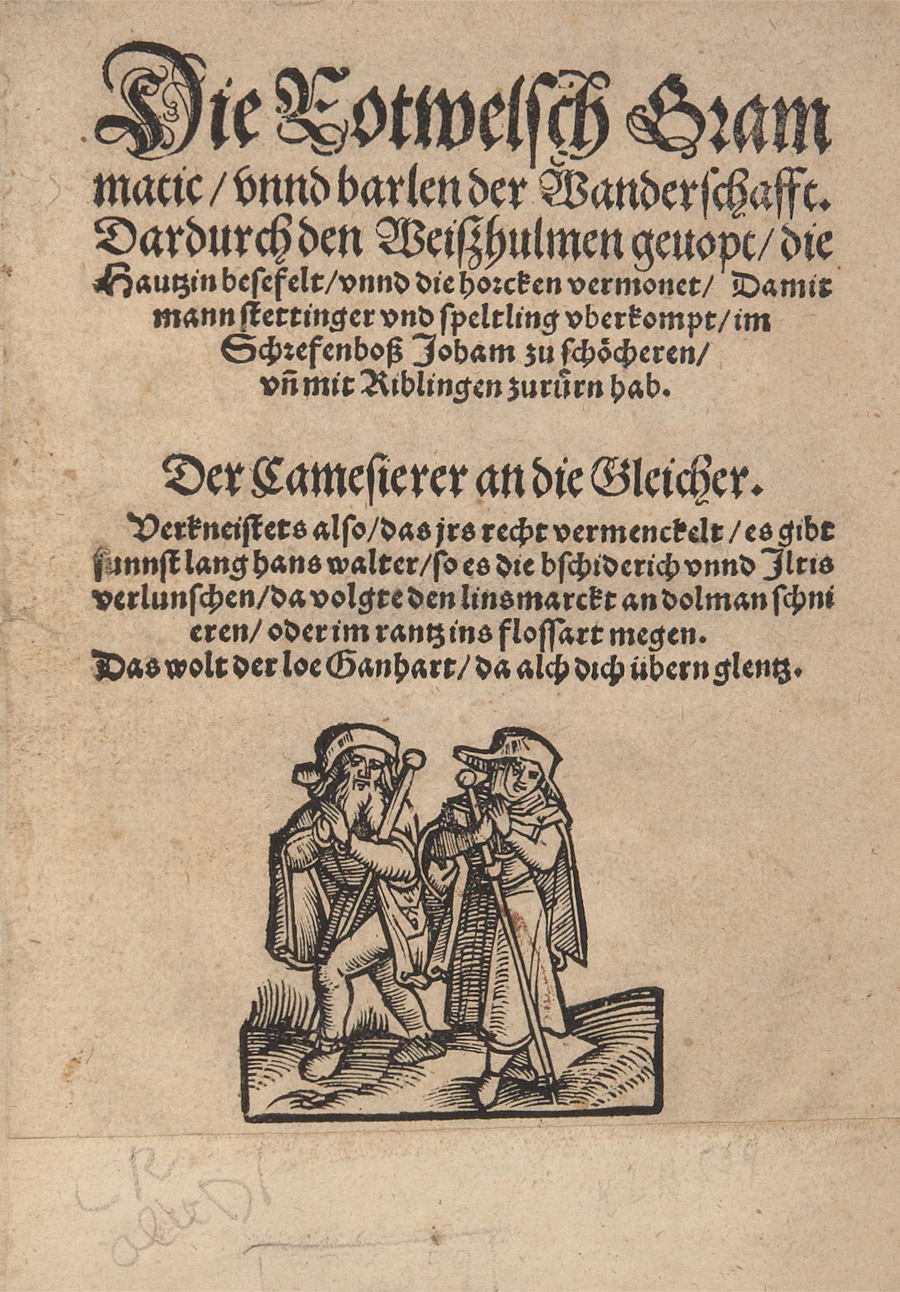The Rare Book & Manuscript Library at the University of Pennsylvania holds a rare copy of Die Rotwelsch Grammatic printed in Basel around 1540. It describes Rotwelsch, a secret language prevalent amongst beggars, vagabonds, pedlars and itinerant craftsmen from the Middle Ages onwards. This cant is based on German but has a large proportion of words from Hebrew, Italian, Romani ("Gipsy") languages, Latin and other languages. The first references to Rotwelsch can be found in a text in Medieval High German dating from around 1250. From the 15th century onwards this cant became identified as the language of false beggars and thieves. Rotwelschvocabulary became part of the so called "literature of roguery." The most famous example of this type of popular literature is the Liber Vagatorum (Book of Vagrants) which was first printed in 1510 and went through many editions and translations. No other than Martin Luther wrote the preface to the 1528 German edition of the Liber Vagatorum.
About the same time, copycats of this book of rogues appeared under the title Die Rotwelsch Grammatic. The copy in the Van Pelt Library consists of 28 printed pages. The title page shows a woodcut of a man and a woman, clearly dressed as wayfarers. The text is in early modern German. There is a short vocabulary of Rotwelsch as well as notes on grammar and language. The text then introduces different types and groups of vagrants. Each carries a Rotwelsch name. A special type of fraud already mentioned in the Liber Vagatorum is fraudulent conversion. Especially Christian women were reputed to be such impostors, claiming to have been converted from Judaism. These female cozeners are called veranerin in Rotwelsch. In French and Italian pamphlets on roguery, fraudsters of this type are known as convertis and iucchi respectively. The first Hebrew sources on these rekim(ריקים, empty people), as Rabbi Meir ben Baruch of Rothenburg (c. 1215-1293) called them, date back to the middle of the 13th century. His contemporary, Rabbi Solomon ben Abraham Adret (c. 1235-c.1310), reports that the French rabbinical authorities also had to address the problem of Jews wandering from town to town, posing as Christians to Christians and as Jews when entering the homes of Jews. Since the 15th century, just as the number of fraudulent converts from Judaism began to rise noticeably, the economic condition of converts became linked to the larger discourse on poverty and on crime committed by socially marginal groups. Jewish impostors became part of literary descriptions of the "dangerous classes" (Gaunerbüchlein), as in the Liber Vagatorum or the Rotwelsch Grammatic.
